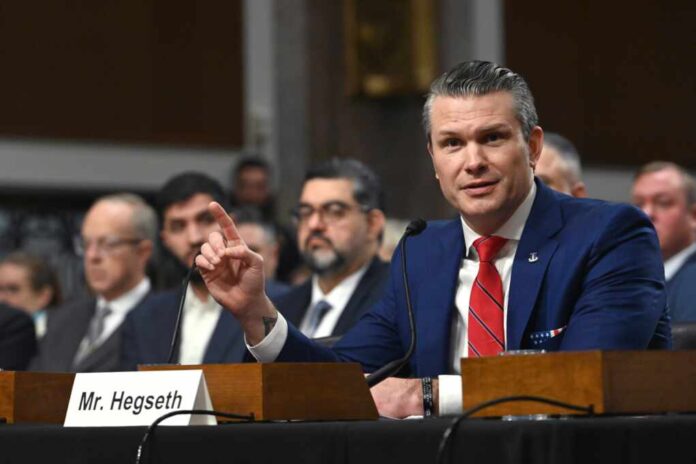
Media outlets find themselves in the crosshairs after Defense Secretary Pete Hegseth calls out CNN and The New York Times for downplaying the impact of the U.S. military strikes on Iran’s nuclear sites.
At a Glance
- Defense Secretary Pete Hegseth criticized media coverage of U.S. strikes on Iran.
- Hegseth claims significant damage to Iran’s nuclear capabilities, contrary to media reports.
- President Trump and CIA Director support Hegseth’s claims with corroborating intelligence.
- Iran acknowledged substantial damage to nuclear sites, countering media narratives.
Media Criticized for Underplaying Attack Impact
Defense Secretary Pete Hegseth openly criticized major media outlets, particularly CNN and The New York Times, during a Pentagon press briefing. These outlets suggested that U.S. military strikes against Iran’s nuclear sites were only marginally effective. Hegseth refuted these claims emphatically, pointing to preliminary intelligence indicating significant damage to Iranian nuclear capabilities. Yet, CNN and The New York Times reported that the strikes only delayed Iran’s nuclear program by a few months.
Watch Live: Pete Hegseth holds Pentagon briefing
Hegseth accused these media giants of twisting the narrative for political gain. “There’s a reason the president calls out fake news for what it is,” Hegseth remarked, defending the efficacy of the strikes. President Trump, alongside corroborating intelligence from CIA Director John Ratcliffe, supported Hegseth’s portrayal of the operation’s success. Ratcliffe underscored that major infrastructure, including centrifuges, had been rendered inoperative.
Corroborating Evidence from Allies and Agencies
President Trump declared that Israeli intelligence verified the extent of the destruction. He stated that Israeli agents confirmed “total obliteration” of critical nuclear facilities like the Fordow site, offering independent confirmation of the success the U.S. aimed to achieve. This evidence starkly contrasts the media representation as acknowledged by Iran’s own admittance of significant damage.
“Israel’s guys went in there [Fordow] after the hit, and they said it was total obliteration” – Donald Trump
Both President Trump and Hegseth emphasized that Iran’s nuclear capabilities were severely depleted, pushing Iran closer to the negotiating table. Reports indicate that the infrastructure damage was so significant that it will take years for Iran to recover. CIA Director Ratcliffe dismissed media claims to the contrary, backing up the assertions with credible evidence and intelligence reports.
A Divisive Moment in Media Coverage
The divide between White House and mainstream media narratives proves one thing: responsibility falls on the public to sift through biased media reports to uncover the truth. Defense Secretary Hegseth emphasized that initial intelligence reports may be misunderstood or spun to serve political agendas, demanding a more accurate reflection of the situation on the ground. Hegseth rallied against the false media portrayal, warning that such narratives undermine the efforts and strategies applied to safeguard national security.
“The instinct of CNN, the instinct of The New York Times, is to try to find a way to spin it for their own political reasons to try to hurt President Trump or our country,” Pete Hegseth reflected during the briefing, voicing the concerns of many who question the integrity of today’s media. Whether this will result in further rebuttals from the criticized outlets remains to be seen.

























